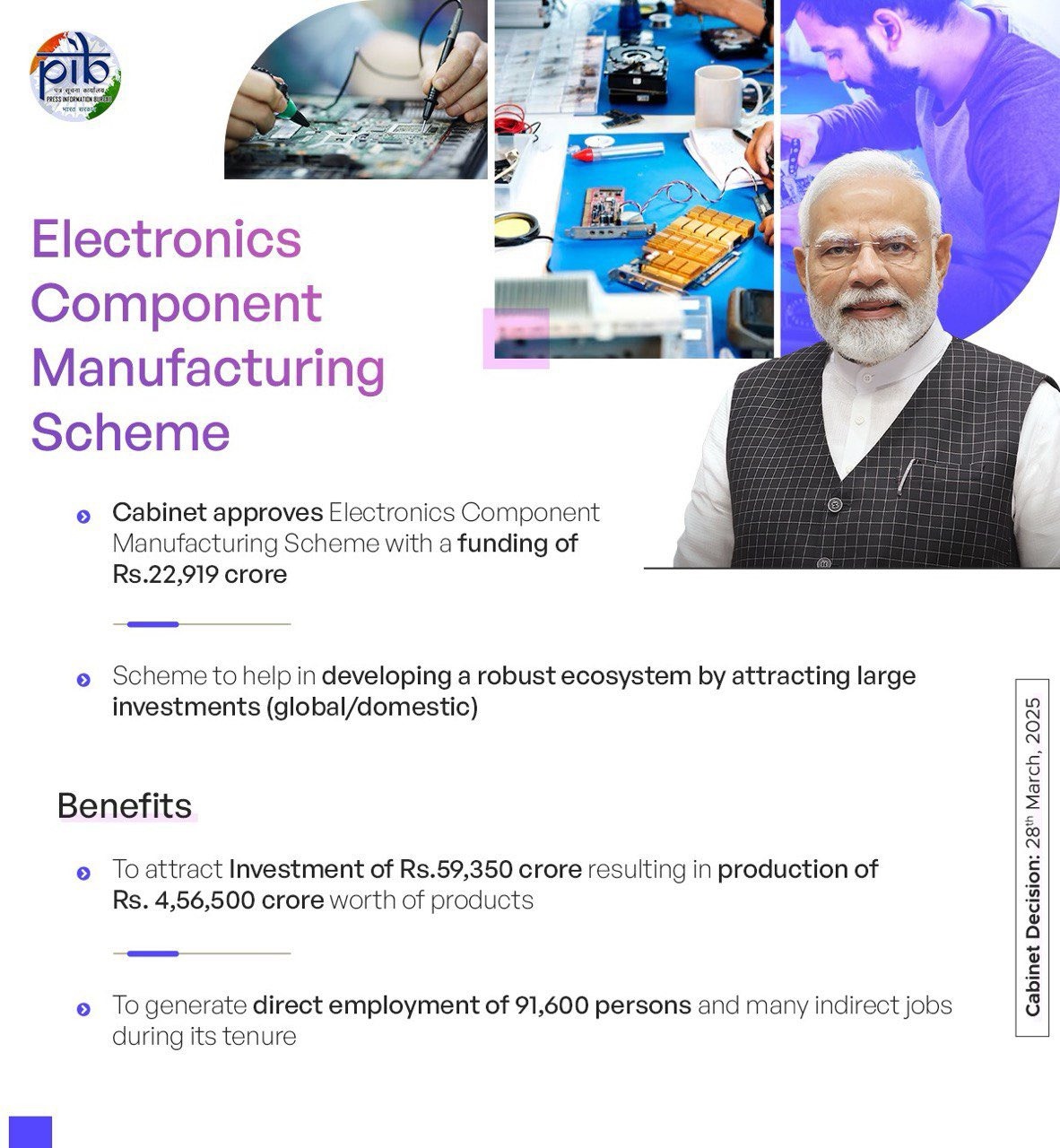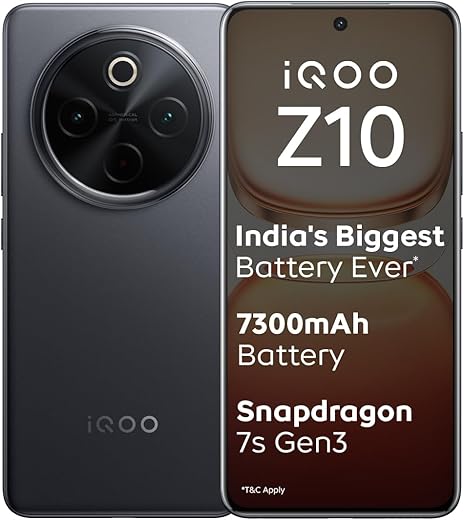The Indian government has taken a significant step toward strengthening the country’s electronics manufacturing ecosystem by approving the Electronics Component Manufacturing Scheme, allocating Rs. 22,919 crore. This initiative, sanctioned by the Union Cabinet and chaired by Prime Minister Narendra Modi, aims to reduce dependence on imports and position India as a global hub for electronics manufacturing.
Objectives and Goals
The primary goal of this scheme is to promote self-reliance in electronics manufacturing and integrate Indian companies into global value chains (GVCs). The scheme focuses on:
Attracting investments from both domestic and international players.
Developing a robust component ecosystem in India.
Enhancing domestic value addition (DVA) by increasing local production capabilities.
Reducing reliance on imported electronic components to create a sustainable supply chain.
Expected Economic Impact
The government anticipates that this initiative will bring significant economic benefits, including:
Total investments of Rs. 59,350 crore from key industry players.
The projected production worth Rs. 4,56,500 crore over the scheme’s duration.
Creation of 91,600 direct jobs and a large number of indirect employment opportunities.
Key Features of the Scheme
To encourage the manufacturing of essential electronic components, the scheme includes various incentives structured by target segments:
Sub-Assemblies (Turnover-Linked Incentive)
Display module sub-assemblies
Camera module sub-assemblies
Bare Components (Hybrid Incentive Structure)
Non-Surface Mount Devices (non-SMD) passive components
Electro-mechanical components
Multi-layer Printed Circuit Boards (PCBs)
Li-ion cells for digital applications (excluding energy storage and mobility solutions)
Enclosures for mobile and IT hardware products
Selected Bare Components (Hybrid Incentive)
High-density interconnect (HDI) and flexible PCBs
Surface Mount Device (SMD) passive components
Supply Chain and Equipment (Capex Incentive)
Parts used in sub-assemblies and bare components
Capital goods required for electronics manufacturing
Scheme Duration and Employment Incentives
The scheme will run for six years, including a one-year gestation period for setup and implementation. Additionally, a portion of the incentives is employment-linked, ensuring that companies meet specific job creation targets to qualify for financial support.
Industry Overview & Growth Trends
The electronics sector is one of the fastest-growing and most highly traded industries worldwide. Recognizing its economic and strategic importance, India has been actively implementing policies to boost domestic manufacturing.
According to government data:
Domestic electronics production has surged from Rs. 1.90 lakh crore in FY 2014-15 to Rs. 9.52 lakh crore in FY 2023-24, reflecting a CAGR of over 17%.
Electronics exports have increased from Rs. 0.38 lakh crore to Rs. 2.41 lakh crore in the same period, with a CAGR exceeding 20%.
The industry is a key driver of job creation, technology innovation, and economic growth in India.
Strategic Importance & Global Positioning
The Electronics Component Manufacturing Scheme is expected to bolster India’s standing in the global electronics supply chain. By incentivizing critical component production, the country aims to reduce its import dependency, improve technological self-sufficiency, and become a preferred destination for electronics manufacturing.
Additionally, the scheme aligns with initiatives like Make in India, Digital India, and Atmanirbhar Bharat, reinforcing the country’s commitment to domestic production, innovation, and exports.
Conclusion
The approval of the Rs. 22,919 crore Electronics Component Manufacturing Scheme marks a major milestone in India’s journey towards self-sufficiency in electronics production. With substantial investment inflows, projected high-value production, and extensive employment opportunities, the scheme is set to transform India’s electronics sector and strengthen its global presence in the years to come.
Follow Before You Take on:
Latest Technology News | Updates | Latest Electric Vehicle News | Updates | Electronics News | Mobile News | Updates | Software Updates
























































































































































































